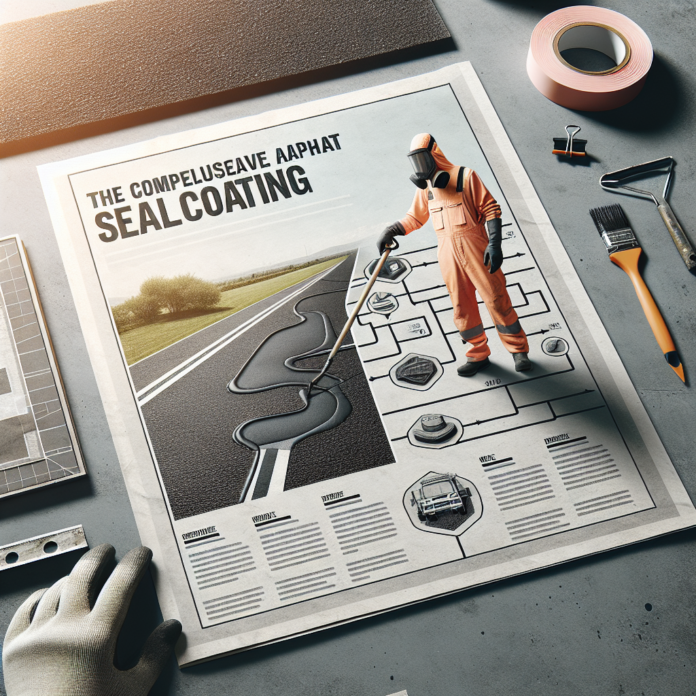Asphalt sealcoating, also known as pavement sealing, refers to the process of applying a protective coating to asphalt-based pavements to provide a layer of defense against the elements: water, oils, and U.V. damage. It serves a pivotal role in prolonging the lifespan of the pavement by forming a protective shield that resists harmful substances and conditions.
The Importance of Asphalt Sealcoating
Firstly, it’s of utmost importance to recognize the role that sealcoating plays in the context of pavement preservation. It does not only beautify the drab look of asphalt but also prolongs its life by protecting it from detrimental wear and tear such as harsh weather conditions, gas, oil spills, and oxidation caused by the UV rays. The sealcoat acts as a waterproofing agent, limiting the rate at which water enters the pavement. This water-proof property coupled with its dark black color makes it effective in melting snow and ice more quickly during the winter periods.
Choosing the Right Sealcoat
There are two main types of sealcoat: coal-tar-based and asphalt-based. The former consists of refined coal tar, water, mineral fillers, and additives. Its resilient nature makes it equally resistant to gas and oil splotches, and it’s more durable. On the other hand, asphalt-based sealcoat is made from crude oil, water, clay fillers, and emulsifying agents. While it has less resistance to gas and oil spots and isn’t as durable, its advantage lies in its environment-friendly composition and its better adherence to asphalt surfaces.
Application of Asphalt Sealcoat
The application of the sealcoat is as important as the product used. It’s usually a two-step process of first applying a primer and then the actual sealcoat. This enhances bonding and prolongs the lifespan. The temperature and weather are key factors to consider during the application. The recommended temperatures should be above 50°F, and there should be no rainfall within the 24-hour window post-application. The sealcoating should be applied in two coats, the initial coat and the second coat after the initial one has dried up. This step is essential in adding more durability and resistance to your pavement.
Conclusion
In summary, sealcoating is an integral part of maintaining and prolonging the lifespan of asphalt pavements. This process not only retains the vivacious look of your driveway or parking lot but also provides a protective shield against harmful substances and elements. Therefore, when choosing the appropriate sealcoat for your pavement, considering factors such as the material’s resistance to harmful substances, longevity, and environmental friendliness is essential. Bearing in mind the correct application method can significantly influence the durability and effectiveness of the sealcoat.
Frequently Asked Questions (FAQs)
1. How often should I sealcoat my pavement?
It’s recommended to sealcoat asphalt pavement every two to three years depending on its usage and the wearing course.
2. How long does sealcoating last?
Sealcoating can last between two and three years. This duration, however, depends on the volume of traffic and the quality of the application.
3. Can sealcoating fill cracks and potholes?
No, sealcoating is not a crack filler or patching product. Cracks and potholes need to be repaired before applying the sealcoat.
4. How soon can I drive on the newly sealed surface?
Normally, a newly sealed pavement should be ready for vehicle traffic after 24 hours. It’s advisable to follow the manufacturer’s instructions for the specific product used.
5. Is sealcoating environmentally friendly?
Most asphalt-based sealcoats are environmentally friendly. They are water-based and made with recycled materials. However, coal-tar-based sealcoating is considered harmful due to its high levels of volatile organic compounds and polycyclic aromatic hydrocarbons.

